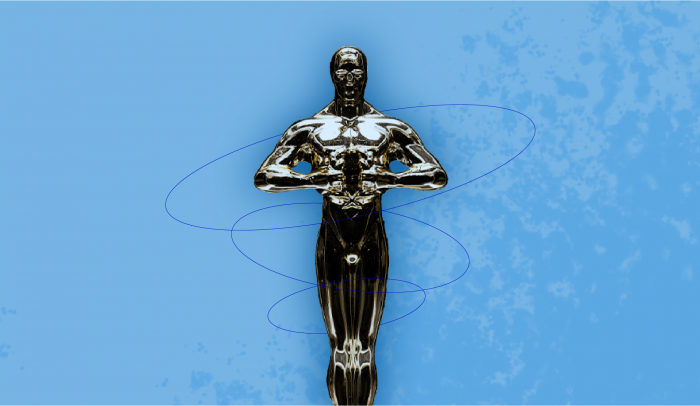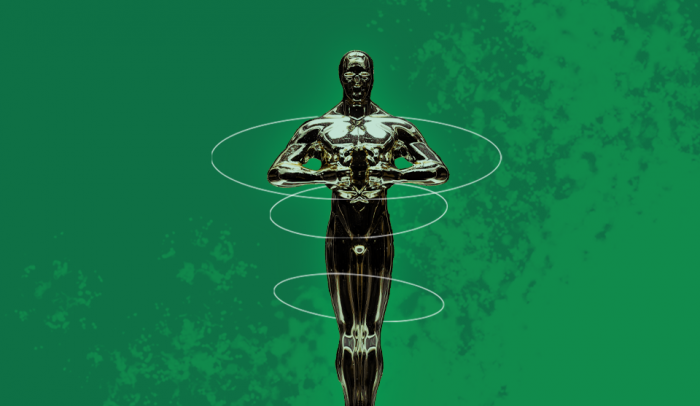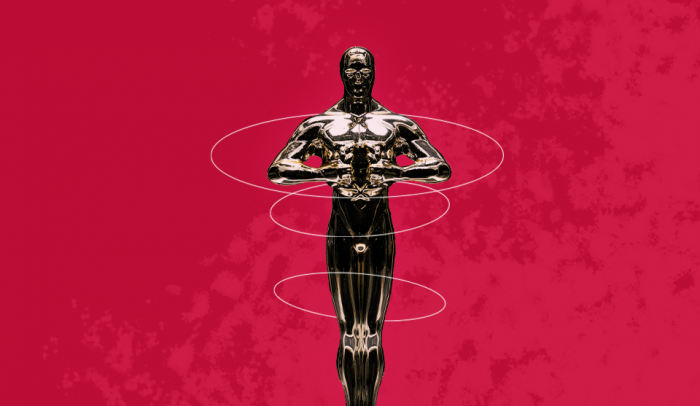Though short in stature, these animated films pack a punch.
While animated features have only had their own Oscars category since 2001, animated shorts have been part of the Oscars since the very first show in 1932. Naturally, Walt Disney had an early monopoly on this category, winning 10 of the first 11 Oscars, but the playing field since then has evened up considerably. In fact, this year’s crop of honored filmmakers is far more diverse than Best Picture, for example. Three of the nominated films were directed by women, including two from outside of the U.S., and another comes from a black director.
So far, we’ve evaluated the nominees for Best Cinematography, Best Production Design, Best Visual Effects, and Best Animated Feature Film. Our final guide before the Oscars on Sunday: Best Animated Short Film.
The Academy defines “short” as “under 40 minutes, including all credits.” That’s a pretty reasonable cushion, and none of the nominated films come close to running that long—the lengthiest runtime in the category is about 15 minutes.
Let’s take a look at the nominees.
Best Animated Short Film
2019 Winner: Bao (Becky Neiman-Cobb & Domee Shi)
2020 Nominees:
– Kitbull
– Sister
– Dcera (Daughter)
– Memorable
– Hair Love
Kitbull
Kathryn Hendrickson & Rosana Sullivan
A traditionally-animated short from Pixar, Kitbull is about a stray kitten living in San Francisco’s Mission District. When its humble life is upended by the addition of a pit bull to its backyard home, the fiercely independent kitten eventually leaves its comfort zone to find its first-ever friend.
Kitbull is the third movie released by Pixar under its SparkShorts program, which gives Pixar filmmakers a chance to create their own short films to be released on YouTube and Disney+. And while Pixar features can take years and untold millions to develop, SparkShorts are generally given a six-month timeframe and a budget in line with their length.
Fully 2D-animated films aren’t that common these days—in fact, it’s a first for Pixar, a studio known for its hyper-realistic animation style. “Pixar has this robust CG {computer-generated} pipeline and is known for its CG work, so 2D animation, which can be easy for other studios, was a challenge for us,” said producer Kathryn Hendrickson. Ultimately, director Rosana Sullivan and Hendrickson chose 2D because it better captured their kitten’s unpredictable bursts of energy.
Since 2011, Sullivan has worked at Pixar as a storyboard artist on movies like Monsters University, The Incredibles 2, and Toy Story 4, among others. But Kitbull is her directorial debut.
Sister
Siqi Song
Written, directed, and animated by Siqi Song, Sister is the story of a man recalling his childhood with an annoying younger sister in 1990s China. The film reflects on China’s “one-child policy” and wonders how life would have been different for the man if his sister hadn’t been around.
Song created Sister as her graduation project at the CalArts Experimental Animation Program. She said the film is based on a conversation she had with a fellow Chinese student at CalArts. The student told Song, a younger sister in a Chinese family herself, that he was also supposed to have a younger sister, but because of the existing policy, she was never born.
The one-child policy is no longer in effect in China, having been fully relaxed in 2015. Initially, Song thought about abandoning the film once the rule was lifted, but she decided to see her vision through. “I had the idea right before they changed the policy,” she said. “When they changed the policy I wanted to give up on making the film—but it became a historical time period that my generation experienced and that we still talk about.”
Song used stop-motion animation to bring her wool characters to life. She used wool, she said, because she thought that the soft texture lent itself well to the world of imagination that the film captures.
Sister is not the only 2020 Oscar nominee that Song had a hand in: she also worked as a junior model maker on Missing Link, which earned a nomination for Best Animated Feature.
Dcera (Daughter)
Daria Kashcheeva
A graduation project from a student at Prague film school FAMU, Daughter shines a spotlight on a fraying relationship between father and daughter.
Director Daria Kashcheeva’s stop-motion animation, coupled with hand-held camerawork, gives the film an energetic, frenetic feel. Her puppets and sets, built of wood and wire then covered with papier-mâché, evoke a certain grittiness. Kashcheeva told Deadline that she was inspired by the Czech carnival of Masopust.
“A lot of people make masks by themselves, and often, they use this papier-mâché because it’s not so heavy, and you can paint on it,” Kashcheeva said. “I was thinking that papier-mâché is really artificial, but it is close to skin—closer than silicone or these materials, which I usually use in animation.”
A first-time nominee at the Academy Awards, Kashcheeva is currently in a master’s program at FAMU and she’s begun planning another project—one with a slightly longer runtime.
Memorable
Bruno Collet & Jean-François Le Corre
A French stop-motion film from director Bruno Collet, Memorable follows Louis, an aging painter whose outlook is increasingly distorted by dementia. The story and aesthetic of Memorable were informed by the experiences of American artist William Utermohlen, a painter who suffered from Alzheimer’s, and Peter Falk, an Emmy-winning actor who suffered from the same disease.
To create the characters, Collet sculpted them, covered them in latex foam, and then painted them. While most of the film is stop-motion animation, some computer-generated effects made much of the “distortion” possible. From the beginning, Collet insisted that this film represent the experience of the person suffering, rather than the experience of a person viewing someone else’s suffering.
“I was really interested in the fact that, for the first time, [with] the painter, we got a glimpse of a real person who was suffering from the disease—not from a person outside,” Collet said. “It’s very touching, because if you look at his paintings, you can really see the evolution of the disease from beginning to end.”
Hair Love
Matthew A. Cherry and Karen Rupert Tolliver
A heartwarming six minutes, Hair Love tells the story of an African-American father who must do his daughter’s hair for the first time. Also adapted as a children’s book, Hair Love was shown in theaters before The Angry Birds Movie 2 and select showings of Jumanji: The Next Level. There’s some star power in this short, too: Issa Rae does the voice of little girl’s mother.
Director Matthew Cherry is a former football player who briefly appeared in the NFL before leaving his career behind to pursue a future in film. With this project, which was financed by a 2017 Kickstarter campaign, Cherry specifically wanted to create an animated film that depicted black characters.
“I go to these animated movies and, often times, you don’t see yourself represented,” Cherry said on Good Morning America. “I can only imagine what little kids feel when they don’t see themselves (on screen), or they don’t see protagonists that have their same style of hair. It can really do a number on your confidence.”
Along with Kitbull, Hair Love is one of two high-profile nominees in the category, since it also comes from a major production studio and has almost 15 million views on YouTube. Currently, all signs point to Cherry’s film winning the honor on Sunday night.




